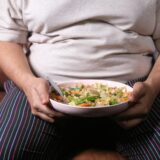Introduction
As we age, maintaining our physical health becomes increasingly important. One often-overlooked metric that can provide significant insights into our overall well-being is grip strength. Surprisingly, grip strength is not just an indicator of hand and forearm fitness but also a crucial predictor of aging and overall health. For personal trainers and fitness enthusiasts alike, understanding and leveraging grip strength can be a powerful tool in promoting longevity and health.
What is Grip Strength?
Grip strength refers to the maximum force that can be applied by the muscles of the hand and forearm. It is commonly measured using a dynamometer, a device that quantifies how much force a person can exert when gripping. While it might seem like a simple measure, grip strength is a valuable indicator of several aspects of health and fitness.
The Link Between Grip Strength and Aging
Predictor of Functional Decline
Research has shown that grip strength declines with age. This decline is often associated with decreased muscle mass and strength, which can lead to functional impairments. For older adults, weakened grip strength can indicate difficulty in performing daily activities, from opening jars to carrying groceries. Regular strength training can help mitigate this decline and improve overall functional capacity.
Indicator of Sarcopenia
Sarcopenia, the age-related loss of muscle mass and strength, often manifests through diminished grip strength. Sarcopenia increases the risk of falls, fractures, and overall mobility issues. By monitoring grip strength, personal trainers can identify early signs of sarcopenia and tailor their programs to include resistance training that helps combat this condition.
Correlation with Overall Health
Studies have found a strong correlation between grip strength and various health outcomes. Lower grip strength has been linked to increased mortality risk, poorer cardiovascular health, and diminished cognitive function. Maintaining or improving grip strength through targeted exercises can thus have broader implications for longevity and quality of life.
Incorporating Grip Strength Training into Personal Training Programs
Assessment and Monitoring
Start by incorporating grip strength assessments into your client’s regular fitness evaluations. This can be done with simple dynamometer tests to establish a baseline and track progress over time. Regular monitoring will help in adjusting training programs as needed and in setting realistic, achievable goals.
Targeted Exercises
Incorporate exercises that specifically target grip strength into your personal training programs. Effective exercises include:
-
- Farmer’s Walk: Holding heavy weights in each hand and walking a set distance helps build overall grip strength.
- Dead Hangs: Hanging from a pull-up bar strengthens the grip and forearm muscles.
- Hand Grippers: Using hand grippers or resistance bands can improve grip endurance and strength.
- Wrist Curls: Performing wrist curls and reverse wrist curls targets the muscles involved in grip strength
- Holistic Approach Integrate grip strength training with a holistic fitness approach that includes cardiovascular, flexibility, and balance exercises. This comprehensive strategy not only improves grip strength but also supports overall physical health, which is crucial as we age.
The Bottom Line
Grip strength is more than just a measure of hand and forearm power; it’s a valuable predictor of aging and overall health. For personal trainers, integrating grip strength assessments and targeted exercises into training programs can help clients maintain their independence, improve functional abilities, and enhance their quality of life. By focusing on grip strength, you can offer a more effective, age-appropriate fitness regimen that supports longevity and well-being.
Conclusion
Incorporating grip strength training into your personal training programs can make a significant difference in your clients’ health and fitness. By recognizing grip strength as a key indicator of aging, you can provide tailored, effective training strategies that promote longevity and functional independence. Emphasize grip strength in your fitness assessments and program design to help your clients achieve their best possible health outcomes.
Optimize Your body with Personal Training:
Ready to enhance your training programs with grip strength exercises? Contact us today to schedule a consultation with John Turk, San Diego’s top personal trainer for aging professionals wanting to get their body back. Whatever your fitness goals are, we’ll create a customized plan that works for you.
Call 858-877-1370
Visit us at www.PersonalTrainerSanDiego.com to Get Started





